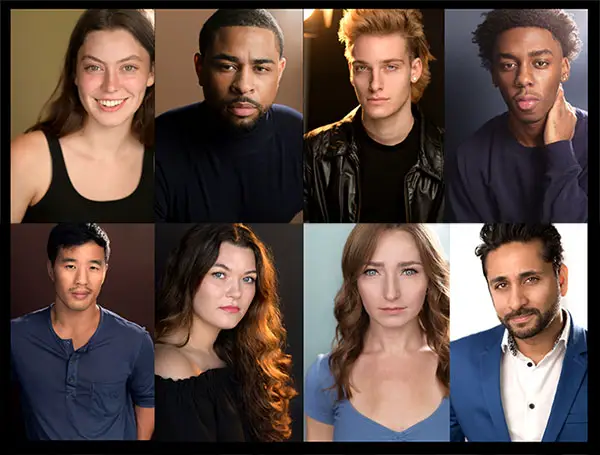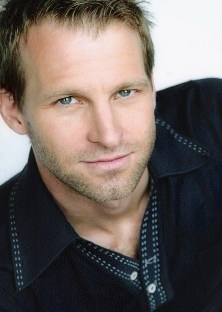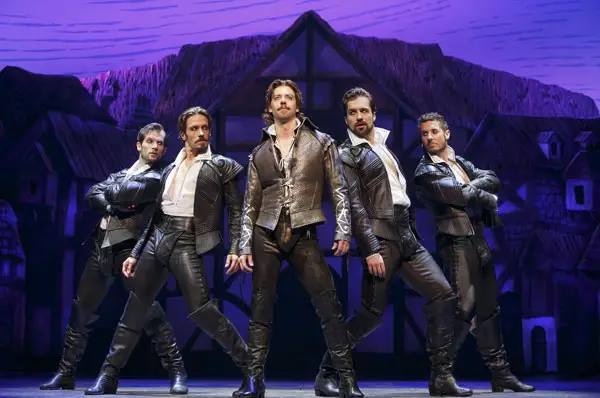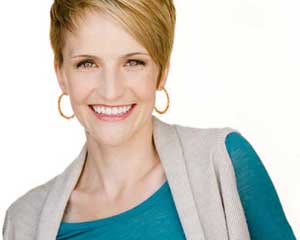
Everyone from your mother to your acting teacher, your agent, and your best friend has their own idea about what makes a great headshot. Show your choices to all these people, and they will each tell you to pick a different shot. So what actually moves the needle when it comes to getting a headshot that will open those audition room doors for you?
As a professional actor for the last 20 years, and a top New York City headshot photographer at William Wilder Photography, I’ve done my fair share of thinking, asking casting directors, and experimenting to answer this question, and have come to a simple conclusion. There are two things a headshot must do in order to advance your career: be visually striking enough to demand attention, and communicate something about who you are as a performer and the qualities you will bring to the role.
In order to achieve this, there are 6 main factors to consider, each one playing a critical role in how your shot comes out. Let’s unpack each of them.
1. Setting Goals For Your Headshots
The first step to getting shots that will advance your career is to get very clear and specific about what you want your headshots to convey. It isn’t necessary to force yourself into ultra-specific “character” types for your headshots – i.e. “my doctor shot, my nerd shot, my jock shot, and my gritty detective shot.” A lot of actors get caught up in this idea of “casting type” and think that there are basically 3 or 4 stock characters or professions that they can play. The reality is that these character types are really just ideas that come to mind when we see a headshot that conveys certain qualities and has a certain aesthetic.
That said, it is important to be as specific as possible about what qualities you most embody as an actor. Are you someone who gives off a sense of warmth? Power? Humor? Angst? Youthfulness? Wisdom? Ruthlessness? Etc. What sorts of people do you most enjoy playing and come most naturally to you? Thinking about these qualities will help you narrow down what you wish to convey in your headshots.
2. Choosing a Photographer
First things first, choose a photographer whose images are striking. There are so many boring headshots out there. Your headshot has to be eye-catching or casting directors will just skim right past it. When you open the photographer’s portfolio, it should make you stop in your tracks and think “oh wow, these pictures are stunning!” There are many other factors that go into choosing a photographer, not least of which are price, availability, location, etc. However, it is important to choose a photographer whose aesthetic matches what you want to convey in your shots. Most photographers have a very particular “look” to their shots. That is OK as long as it is congruent with what you want your pictures to communicate.
For example, if the qualities you wish to convey are cheerfulness, humor, playfulness, innocence, and open-heartedness, choosing a photographer whose work is dark, gritty, and dramatic looking will not be congruent. Instead find a photographer whose shots are light, bright, and colorful. Congruence is a major theme in multiple aspects of creating your headshots, since the lighting, colors, wardrobe, expression, hair and makeup all need to be in alignment to tell the story and convey the qualities you are shooting for.
3. Choosing Your Wardrobe
That brings me to your wardrobe. Many photographers offer packages that include a certain number of “looks” or wardrobe changes. Decide in advance how many you want, and plan each one carefully. As a general rule, clothing should fit well. Baggy jackets etc. might be fashionable, but they just don’t look good in headshots. Also avoid anything with a pattern so loud that it will distract from your face. Simple, classic, timeless clothes are best. No logos, text, or pictures should be on your shirt. Often layering can create more depth, interest, and character in the shot, so consider looks with a light jacket, sweater, or shirt layered over something else.
Now you want to pick clothes that are congruent with the qualities you wish to convey. Depending on the sorts of roles you are drawn to, these don’t need to be ultra specific. Just something that’s suggestive of the type of people you want to play. If you like playing people in positions of power, you might consider a suit. If you’re mainly a comedy actor and want a bright, cheerful headshot with a big smile, pick a bright colored top. This isn’t rocket science, but I’m amazed by how many actors take my advice about how to pick their wardrobe, and still show up with three different colors of the same nondescript t-shirt for their three looks. This stems from actors simply not having done the work of really thinking about who they are as a performer and the kinds of people they want to be playing.
4. Hair and Makeup
The biggest complaint from casting directors about headshots is that often headshots don’t look like you because the hair and makeup are too glamorous and you don’t look the same when they see you for the audition. When it comes to hair, your headshot has to portray the same hairstyle you normally wear. If you decide to curl your hair for your headshots, you have to be prepared to do the same hair style for every audition. It’s best if you just stick with what you normally do for your hair in your headshot. The hair and makeup person is really there just to make sure the hair is lying well and you don’t have frizzy flyaways – not to give you a totally different look.
Likewise, the purpose of makeup is mainly to make sure you don’t have shiny spots on your skin under studio lighting. Makeup should be very natural looking. Save the contouring, eye shadow, and fake lashes for the nightclub. Headshots with a full face of glamor makeup just make you look unprofessional and silly.
5. Posing and Expression
So now you’re at the shoot. You’ve got your wardrobe on and your hair and makeup done. Now it is your job to actually convey those qualities you want in your headshots. Obviously, all elements of the shot have to be congruent. You don’t want a shot with dark, moody lighting against a black background, wearing a black leather jacket, but with a bright, happy grin on your face! All the elements of the shot need to come together to tell one cohesive story about you. If you are clear on what that is, you are halfway there.
Now, you need to remember that posing for headshots is similar to acting on film. Less is more. As a photographer, I see the best results with clients who don’t try to do too much with their faces. When you try to “do an expression,” it usually looks too big, and comes across as phony. A good photographer will be able to coach you and get the best expressions out of you. It is your job to stay relaxed and natural, and go with the direction your photographer is giving. The biggest killer of a headshot is an uncomfortable looking expression. Actors who look nervous, posed, or trying too hard in their shots will rarely be called in by casting. The human eye can detect insecurity and inauthenticity and is repelled by them. That’s why, just as with film acting, relaxation and being comfortable and present in the moment is the most important thing. And just as with acting, the key to being relaxed and not self-conscious is to put your attention on something besides yourself, how you look, and what expression you are making. Look into the camera and imagine it is a person (this shouldn’t be hard, since there is an actual person on the other side of it!).
Now focus on projecting the qualities you have identified for yourself at that person through your eyes. I usually coach my clients to do this with simple prompts such as “give me some warmth,” or “show me some mischief like you have a secret,” etc. This helps you to create an active moment instead of just worrying about how you don’t want your nose to look funny, or that weird thing your eyelid sometimes does in pictures.
6. Choosing Your Final Images
That brings me to one of the most important steps – choosing your final images. I often look at headshots that don’t work all that well, or hear actors say they aren’t happy with their headshots, and wonder if the photographer captured something better, but the actor just didn’t pick the best shots. Depending on your photographer, there can be several hundred images taken, and usually it will be up to you to pick which ones you think will serve you best in your career.
While it is true that everyone will have their own ideas about which shot you should use, it is also true that you should consult with at least one other person who knows your work, knows you as a person, and knows the industry. Your agents and your acting teachers are good people to help you make your choice. Your mom… not so much. You shouldn’t make the decision alone, because none of us can really see ourselves the way others see us.
We also tend to fixate on little imperfections in how we look, and pick headshots based on which make us look the most like the ideal we have in our heads of how we wish we looked. This will often blind us to picking the shot that will actually serve us in our careers. Remember to look for shots that are visually striking. As you are looking through your gallery, your eye will naturally skim over some shots and stop on others. Trust that. Those images will have the same effect on a casting director, which is what you want.
Next, make sure you pick shots that communicate the qualities you set out to portray. If the image grabs attention, and shows us those qualities, then it will open doors for you in your career!
Written by William Wilder
If you are a New York City actor looking to get new headshots and would like to collaborate on creating some visually striking images that will communicate who you are as a human being and a performer, and the qualities you bring to the table, I would love to see you at William Wilder Photography!



